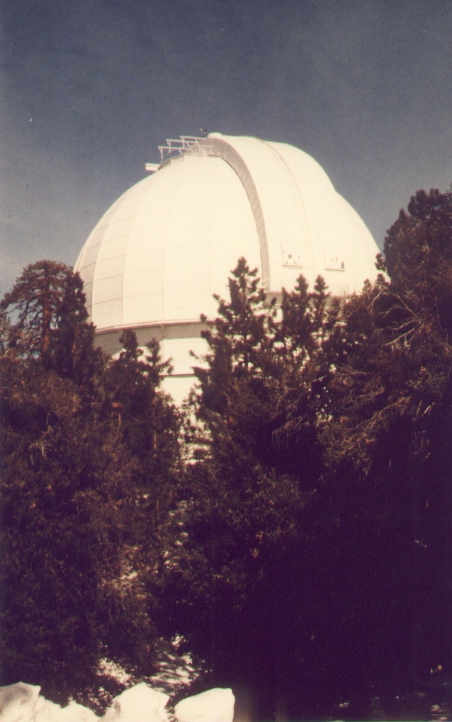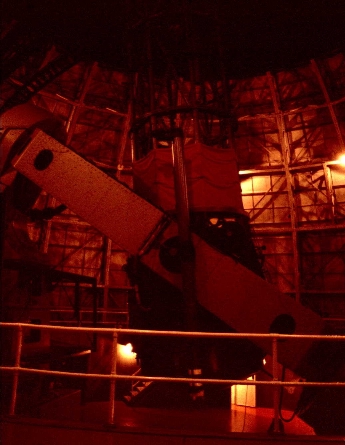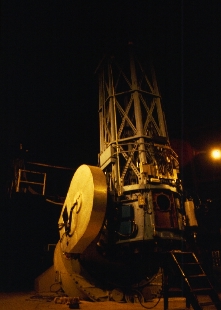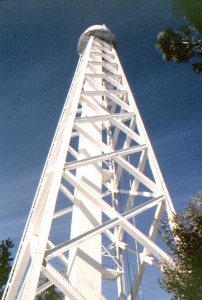

Ah, the history. Hubble detecting extragalactic Cepheid variables and measuring galaxy redshifts, Baade distinguishing stellar populations in Andromeda, Michelson measuring an interferometric diameter for Mira, Einstein peering through an eyepiece for the news cameras. Mount Wilson certainly has a cachet in this century's astronomy. In fact, Mount Wilson and Palomar had a singular status in the public eye for the six decades that one of the two was the largest traditional telescope on Earth, achieving a level of recognition and an aura of prestige that are unlikely to be equalled in today's more dispersed scientific community. Even after Palomar was opened, Mt. Wilson continued to be an important source of basic stellar data (and other kinds of high-resolution spectroscopy), until it was mothballed for several years following the split between the Carnegie observatories and Caltech, as the Carnegie operation concentrated resources on Las Campanas. The 100-inch Hooker telescope has in fact been reborn as a testbed for high-angular-resolution studies such as adaptive optics, since the seeing is often very good at this site and objects bright enough to work on for these studies can shine through the scattered light pollution of the Los Angeles area. There are other interesting electromagnetic effects to content with, too - major television and radio transmitters on the next peak. Here's a realistically dim view of the Hooker telescope itself, circa 1981. Note the battleship construction and classic English yoke mounting, which precludes pointing near the pole in the interest of stability (like the IRTF and UKIRT mounts from the 1970s).

The older, adjacent 60-inch telescope (which, if memory serves, appeared in the Boris Karloff/Bela Lugosi movie The Invisible Ray) was recently used for over a decade in a project to monitor solar-type stars for similar kinds of activity cycles, using the calcium H and K lines emitted from their chromospheres as tracers of spot and flare activity (hence the name "HK Project").

 Of course,
having been founded by George Ellery Hale, solar work
was long a key part of Mount Wilson operations, with the most noteworthy
instrument being the 150-foot solar tower telescope. This was one of
the sometimes-extravagant solutions that solar astronomers have been driven
to, in efforts to improve the image quality while still using the light
from the very source of the heat that impairs observations. Others have
included surrounding the dome with water,
refrigerating the telescope structure, and pumping all the air out of the
telescope itself. Here's a shot of the 150-foot (more or less 50-meter)
tower telescope at Mt. Wilson.
Of course,
having been founded by George Ellery Hale, solar work
was long a key part of Mount Wilson operations, with the most noteworthy
instrument being the 150-foot solar tower telescope. This was one of
the sometimes-extravagant solutions that solar astronomers have been driven
to, in efforts to improve the image quality while still using the light
from the very source of the heat that impairs observations. Others have
included surrounding the dome with water,
refrigerating the telescope structure, and pumping all the air out of the
telescope itself. Here's a shot of the 150-foot (more or less 50-meter)
tower telescope at Mt. Wilson.
The major domes are visible in the satellite image from Google Maps.
Last changes: 04/2007 © 1999-2007